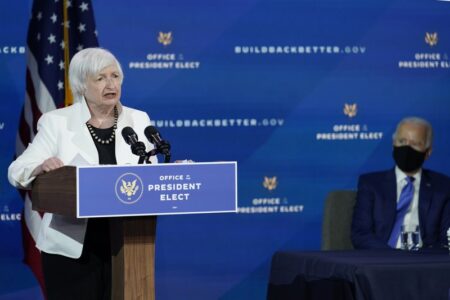What has been happening around Blockchain Technology and Cryptocurrencies this week? The most relevant local and international developments as well as appealing background reports in a pointed and compact weekly review.
Stablecoins, blockchain tokens tied to the value of a FIAT currency, represent a critical pillar in the cryptocurrency ecosystem. Mostly pegged to the dollar, they are an integral part of countless tradable currency pairs on exchanges as well as decentralized lending platforms. Ultimately, stablecoins serve to bypass volatility-prone cryptocurrency exposure without having to leave the blockchain ecosystem. However, because these tokens can be exchanged 1:1 for the respective FIAT currency, its issuers hold a role that was previously reserved exclusively for central banks and the banking system. Accordingly, stablecoins have repeatedly been perceived by regulators as a threat to monetary sovereignty. Just a few months ago, U.S. Treasury Secretary Janet Yellen called for a complete ban on the sector. This week, however, a Biden administration working group advocated for an integration into the existing legal system. By putting stablecoin issuers on an equal playing field with regulated banks, the Treasury hopes to increase transparency, control, and security without strangling significant innovation in the process.
Bitcoin comes with a clearly predefined monetary policy that is equipped with a decreasing inflation rate. This clearly differentiates the cryptocurrency from common fiat currencies. In an environment of rising inflation rates, the digital currency is therefore increasingly coming onto the radar of institutional investors as an inflation hedge. Recently, companies have begun to include the asset as an asset on their balance sheets. Among the best-known pioneers is MicroStrategy. CEO Michael Saylor likes to compare Bitcoin to digital gold, but believes the cryptocurrency is a better option than the precious metal. Similarly, Paypal co-founder and venture capitalist Peter Thiel believes that cryptocurrency price trends prove that existing inflation fears are real. Thiel’s company Palantir is now considering a foray into crypto by adding the digital asset to its balance sheets. The company has also already started accepting Bitcoin as a payment method from customers.
In developed nations that have an accessible and intact financial system, cryptocurrencies are often perceived as nothing more than a pure speculative tool. However, a look at poorer regions of the world reveals the actual potential of the technology. Large parts of the world’s population are still denied access to the banking system. In developing countries, Bitcoin is increasingly serving as the only way to gain a gateway into the economic system. At the same time, it provides inflation protection against the often strongly depreciating local currency. Africa’s example is a powerful demonstration of how businesses and individuals are benefiting from Bitcoin. Africa’s largest economy, Nigeria, already fully regulated and legalized cryptocurrencies and issued guidelines for companies. Following the full Bitcoin implementation in El Salvador, other African and Latin American countries could subsequently consider the crypto alternative.
If Bitcoin is used as a payment method, alternative solutions are necessary due to the limiting network properties of the cryptocurrency. Centralized services such as PayPal and Visa offer hybrid solutions for fast Bitcoin payments, but this comes with compromises in terms of security and decentralization. The Lightning network, on the other hand, is a multi-tiered, decentralized solution built on the Bitcoin blockchain as the settlement layer. By using payment channels, the second-layer solution stays true to Bitcoin’s original vision as a peer-to-peer network. The integration of the Lightning network into the Salvadoran economy led to explosive growth in terms of deposited Bitcoins and effective user numbers.
In addition: Non-fungible tokens (NFTs) were particularly popular in the art industry in their early days. Unique images with proof of ownership on the blockchain were immediately popular and are currently traded with weekly volumes in the triple-digit millions. However, the use cases of NFTs go far beyond digital image trading. In addition to the gaming industry, the technology also has the potential to disrupt the music industry. With the emergence of streaming services like Spotify, the industry has already gone digital. This trend is paving the way for new innovations related to NFTs. The unique tokens have the potential to significantly change the traditional business field of music artists. Moreover, NFTs can serve as a tool to build closer and more exclusive relationships between artists and their most passionate fans.
Selected articles in the weekly review:
New laws regulating stablecoins are intended to effectively integrate them into the current regulatory environment of banks.
Entrepreneur and investor Peter Thiel said that the price of bitcoin and other major cryptocurrencies shows that inflation concerns are real.
In developing countries, the adoption of Bitcoin and other cryptocurrencies is growing rapidly, illustrated by the example of Africa.
Daily bitcoin payments became impossible due to high transaction costs. The Lightning network offers a two-layer solution.
NFT is the new buzzword in the music industry this year, but what value do these unique tokens actually provide for artists and fans?













